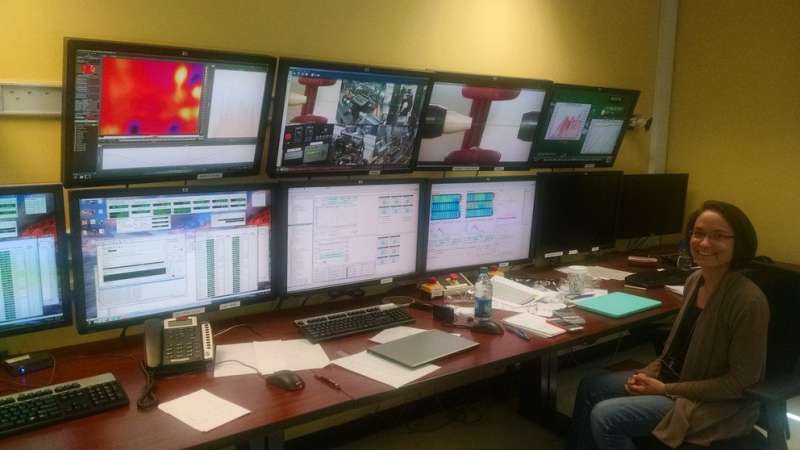3-D printing eliminates undesirable trait in conventional superalloys

An undesirable trait found in traditionally processed superalloys does not exist in a 3-D-printed, nickel-based superalloy, according to a team of materials scientists who think this could lead to new manufacturing techniques that allow for alloys with tailored properties.
The trait, called dynamic strain aging (DSA), occurs in metals at high temperatures subjected to stress. In conventionally processed materials, if DSA is present, the strength of the material fluctuates with applied deformation, resulting in serrated stress-strain curves.
Researchers, led by Allison Beese, assistant professor of materials sciences and engineering at Penn State, tested the 3-D-printed Inconel 625 versus traditionally processed Inconel 625 using neutron diffraction characterization with mechanical testing at Oak Ridge National Laboratory. Data gathered at the microscopic level gave a picture of the grain-level origins of the serrated stress curve, and resulted in a new understanding of the microstructure mechanisms that drive this phenomenon. This research, published in Nature Communications, could pave the way for designing materials without dynamic strain aging.
Superalloys are metals with high strength and corrosion resistance, even at high temperatures.
"We saw the characteristic serrated stress curves in conventionally processed Inconel 625 at elevated temperatures, where the flow stress oscillates up and down as the material is deformed up and down," Beese said. "That is not an ideal behavior for materials to have as it could result in early breakage and unpredictable behavior."
The researchers found that the conventional alloy had a random crystal structure but that the 3-D-printed version had a better crystal texture and more finely dispersed particles.
"We used a unique experimental setup to interrogate the mechanics at the grain level," Beese said. "We wanted to understand how that contributes to the difference in macroscopic behavior that we see between these two forms of Inconel 625 that had the same elemental composition, but were manufactured in different ways. We were able to develop a mesoscopic understanding of DSA's origins, which was previously missing."
The team attributed the lack of DSA in the 3-D-printed material to a combination of finer particles distributed within the grains of this material and better crystal texture in the material, resulting in directionally-dependent properties, similar to wood, in which the material has differences in strength across versus with the grain.
Beese said additional research could allow the 3-D-printed material to be further tuned for desired performance during initial processing or with the use of heat treatments prior to fabrication to adjust the particles and grain structures. Printing superalloys to near net shape also is useful because superalloys, due to their strength, are difficult to machine. Printing reduces the machining requirements, along with the amount of wasted material, and could be beneficial.
This research, Beese said, could help improve longstanding models used to design and understand metals that undergo DSA during deformation, and also provide targets for the design of new metallic materials, particularly those fabricated using additive manufacturing.
More information: Allison M. Beese et al. Absence of dynamic strain aging in an additively manufactured nickel-base superalloy, Nature Communications (2018). DOI: 10.1038/s41467-018-04473-5
Journal information: Nature Communications
Provided by Pennsylvania State University





















